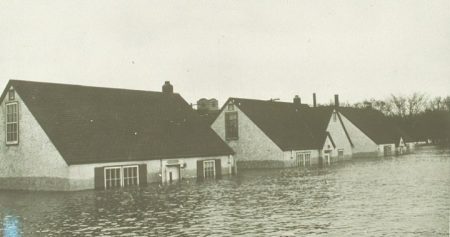A tragic house fire occurred on the Clearwater River Dene Nation in northern Saskatchewan, resulting in the deaths of two individuals, including a teenage girl. The fire, which took place approximately 600 kilometers northwest of Saskatoon, has left the community in shock as it grapples with the loss of life in such a devastating circumstance. While the girl was rushed to the hospital where she later succumbed to her injuries, the identity of the second victim, found deceased within the residence, remains unconfirmed. The incident highlights the vulnerabilities faced by remote communities, particularly during winter months when fires can escalate rapidly and impact emergency response.
Authorities including the Royal Canadian Mounted Police (RCMP) provided updates on the situation, emphasizing their ongoing investigation into the cause of the blaze. RCMP spokesperson Keely Grasser confirmed the sequence of events surrounding the tragedy, mentioning the quick response from emergency services. The Saskatchewan Public Safety Agency is actively involved to determine what led to the fire, giving special focus to the safety measures in such communities. The overall safety procedures and fire prevention strategies in First Nation communities are often scrutinized after such incidents, urging a reevaluation of existing protocols and resources.
Chief Teddy Clark of Clearwater River Dene Nation expressed his condolences on social media, conveying the sorrow felt across the community. He announced the efforts to form a crisis team designed to provide support to families and individuals affected by this calamity. The chief’s message reflected a collective grieving process, acknowledging the profound impact this tragedy would have on organizing and fostering a sense of solidarity among the residents. In light of the event, local schools were temporarily closed to allow students and staff to process the tragedy alongside mental health professionals that were made available to assist those in distress.
In addition to the immediate emotional support services provided, the incident also opens a dialogue about the broader challenges facing Indigenous communities in Canada. Often, these communities deal with limited access to emergency services, healthcare, and mental health resources. Following incidents such as this fire, there is usually a spotlight on the need for increased funding and investment in essential services. The long-term goal should entail not just responding to crises but also implementing preventative measures that ensure such tragedies are less likely to occur in the future.
As investigations continue, discussions will likely arise regarding potential systemic changes needed within fire safety regulations specific to First Nations across Canada. The focus should shift not only to the immediate aftermath of the incident but also on how communities can build resilience for the future. Engaging local leaders, stakeholders, and government representatives can facilitate a comprehensive approach to enhancing fire safety, education, and community preparedness, which are essential for improving the overall safety and well-being of residents living in these areas.
In conclusion, the house fire on Clearwater River Dene Nation serves as a painful reminder of the challenges faced by many Indigenous communities in Canada. The loss of lives and the grief experienced by families and the broader community underscore the importance of providing adequate support systems during times of tragedy. Efforts by local leadership to address mental health needs and facilitate healing demonstrate resilience amid heartbreak. The event also raises critical questions about fire safety and emergency preparedness tailored to the specific needs of Indigenous populations, marking an essential step forward towards ensuring such a tragedy does not happen again.










